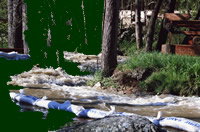
Getting back to business after a disaster depends on the preparedness planning you do now. Floods can happen anywhere. Businesses nationwide should write down their emergency preparedness plan before a disaster hits.
Here are some simple steps that may help you avoid environmental problems that floods can create.
Storage:
- Make sure drums and other containers of hazardous wastes or used oil are closed, sturdy, and leakproof.
- Label all hazardous waste containers with the words “Hazardous Waste,” a description of contents, and the date you first added the waste.
- Secure containers to protect from damage.
- Place containers in an appropriate storage location; remove from lower areas such as basements.
Need an answer fast? Relax. Our editors guarantee a personalized response to your questions within 3 business days. Take a free trial of Enviro.BLR.com and see what everyone is talking about. For a limited time, also receive the new free special report: 2011-2012 EHS Salary Guide. Download Your Free Report
Disposal:
- If possible, contract for the proper disposal of wastes before flooding begins.
- Ship hazardous waste off-site to a permitted transporter or facility.
- Keep copies of shipping manifests and receipts when disposing of any hazardous waste.
What About Flood Insurance?
The first thing you should do is find out if your business is at risk for a flood and the impact it would have on your operations. To identify a community’s flood risk, FEMA conducted a Flood Insurance Study that compiled statistical data on river flows, storm tides, hydrologic/hydraulic analyses, and rainfall.
Forget expensive calls to lawyers and consultants. With Enviro.BLR.com, you get instant access, 24/7. Try it out today and get the 2011-2012 EHS Salary Guide, absolutely free. Download Your Free Report
From this study FEMA took topographic surveys to create flood hazard maps. Use these maps to outline your community’s different flood risk areas.
Flood insurance is available in most communities through insurance agents and is most likely available whether your building is in or out of an identified flood-prone area.
FEMA manages the National Flood Insurance Program (NFIP), which makes federally-backed flood insurance available in communities that agree to adopt and enforce floodplain management ordinances to reduce future flood damage.
Remember that 25 percent of businesses that close their doors during a flood never reopen them. Don’t let a flood take away all your hard work—be prepared!
